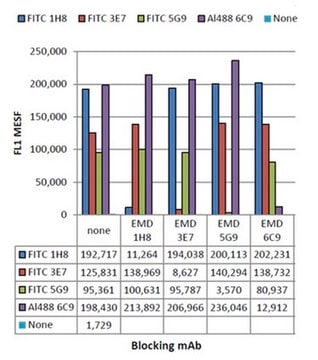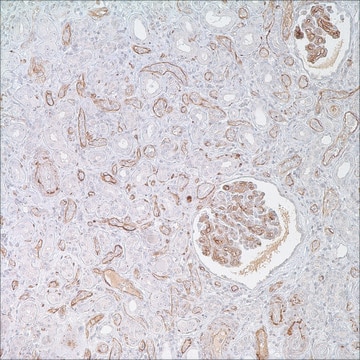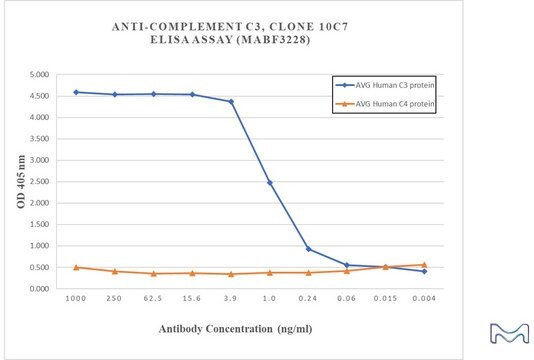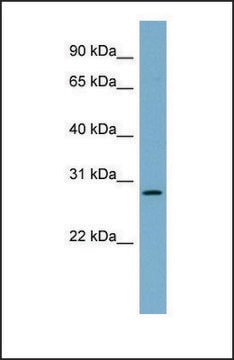MABF972
Anti-Complement C3b/iC3b Antibody, clone 3E7, neutralizing
clone 3E7, from mouse
Sinónimos:
Complement C3, C3 and PZP-like alpha-2-macroglobulin domain-containing protein 1, Complement C3 beta chain, C3-beta-c, C3bc, Complement C3 alpha chain, C3a anaphylatoxin, Acylation stimulating protein, ASP, C3adesArg, Complement C3b alpha′ chain, Complem
About This Item
Productos recomendados
biological source
mouse
Quality Level
antibody form
purified immunoglobulin
antibody product type
primary antibodies
clone
3E7, monoclonal
species reactivity
human, primate
technique(s)
flow cytometry: suitable
immunocytochemistry: suitable
neutralization: suitable
isotype
IgG1κ
NCBI accession no.
UniProt accession no.
shipped in
wet ice
target post-translational modification
unmodified
Gene Information
human ... C3(718)
General description
Specificity
Immunogen
Application
Flow Cytometry Analysis: A presentive lot detected C3b/iC3b deposit on anti-CD20 mAb Rituximab-opsinized human peripheral blood ARH-77 & Raji B cells, as well as Rituximab-opsinized CD20+ cells freshly isolated from monkey blood (Kennedy, A.D., et al. (2003). Blood. 101(3):1071-1079).
Immunocytochemistry Analysis: A presentive lot detected C3b/iC3b deposit on anti-CD20 mAb Rituximab-opsinized human peripheral blood ARH-77 & Raji B cells, as well as Rituximab-opsinized CD20+ cells freshly isolated from monkey blood (Kennedy, A.D., et al. (2003). Blood. 101(3):1071-1079).
Inflammation & Immunology
Immunoglobulins & Immunology
Quality
Target description
Physical form
Storage and Stability
Handling Recommendations: Upon receipt and prior to removing the cap, centrifuge the vial and gently mix the solution. Aliquot into microcentrifuge tubes and store at -20°C. Avoid repeated freeze/thaw cycles, which may damage IgG and affect product performance.
Other Notes
Disclaimer
Not finding the right product?
Try our Herramienta de selección de productos.
Storage Class
12 - Non Combustible Liquids
wgk_germany
WGK 2
flash_point_f
Not applicable
flash_point_c
Not applicable
Certificados de análisis (COA)
Busque Certificados de análisis (COA) introduciendo el número de lote del producto. Los números de lote se encuentran en la etiqueta del producto después de las palabras «Lot» o «Batch»
¿Ya tiene este producto?
Encuentre la documentación para los productos que ha comprado recientemente en la Biblioteca de documentos.
Nuestro equipo de científicos tiene experiencia en todas las áreas de investigación: Ciencias de la vida, Ciencia de los materiales, Síntesis química, Cromatografía, Analítica y muchas otras.
Póngase en contacto con el Servicio técnico








